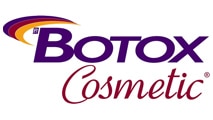
Botox® Cosmetic
Botox® Cosmetic is an FDA-approved injectable treatment that temporarily improves the appearance of expression lines and wrinkles, such as forehead wrinkles, “11” lines between the eyes, crow’s feet, and laugh lines. Botox® works by temporarily relaxing the muscle contractions that cause these dynamic wrinkles.

Dysport®
Dysport® works in much the same way as Botox® Cosmetic, although Dr. Krant may recommend a particular product based on your unique needs and goals. Dysport® helps to smooth the appearance of facial lines and wrinkles for younger-looking results that can last up to 6 months.
